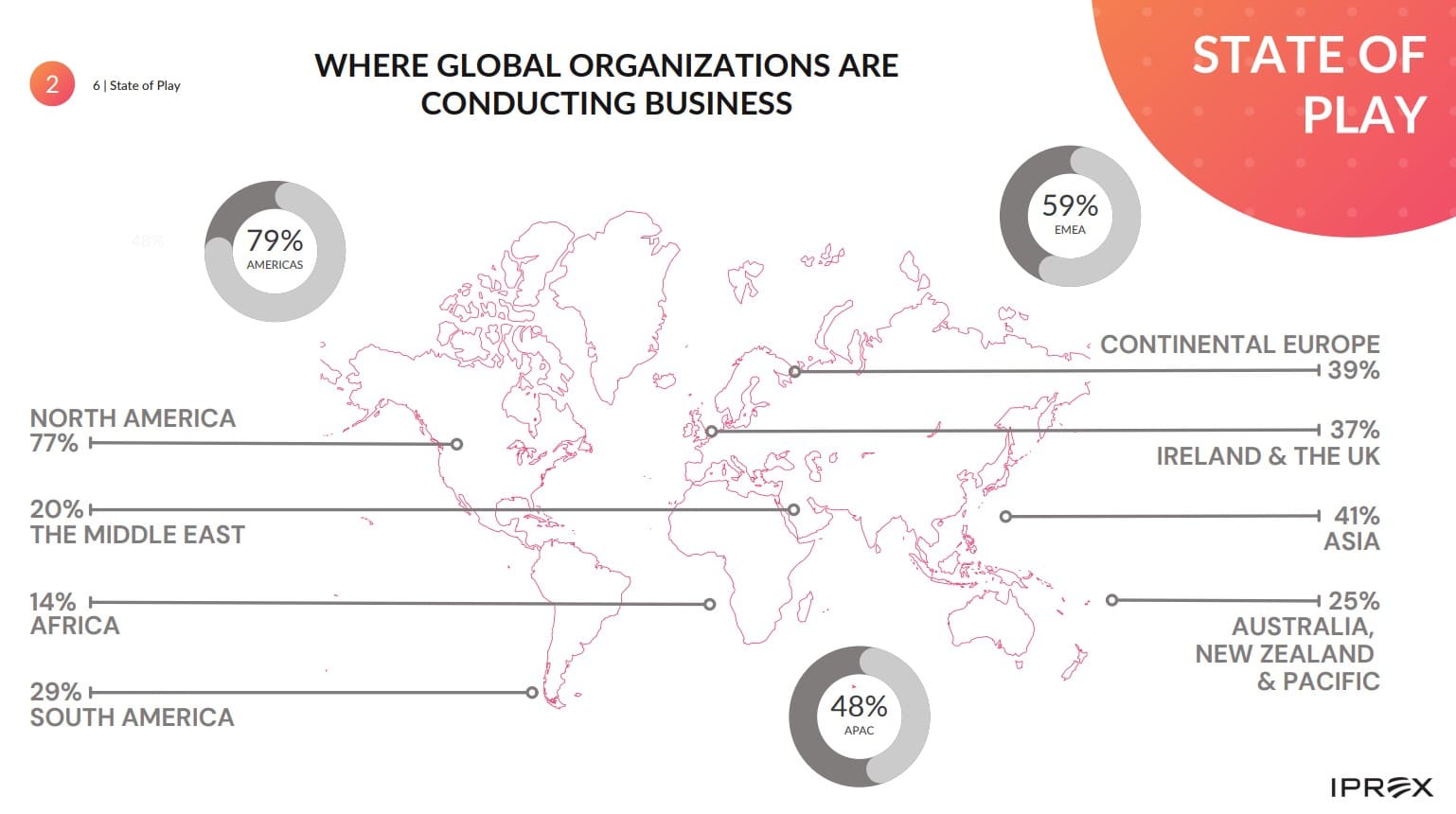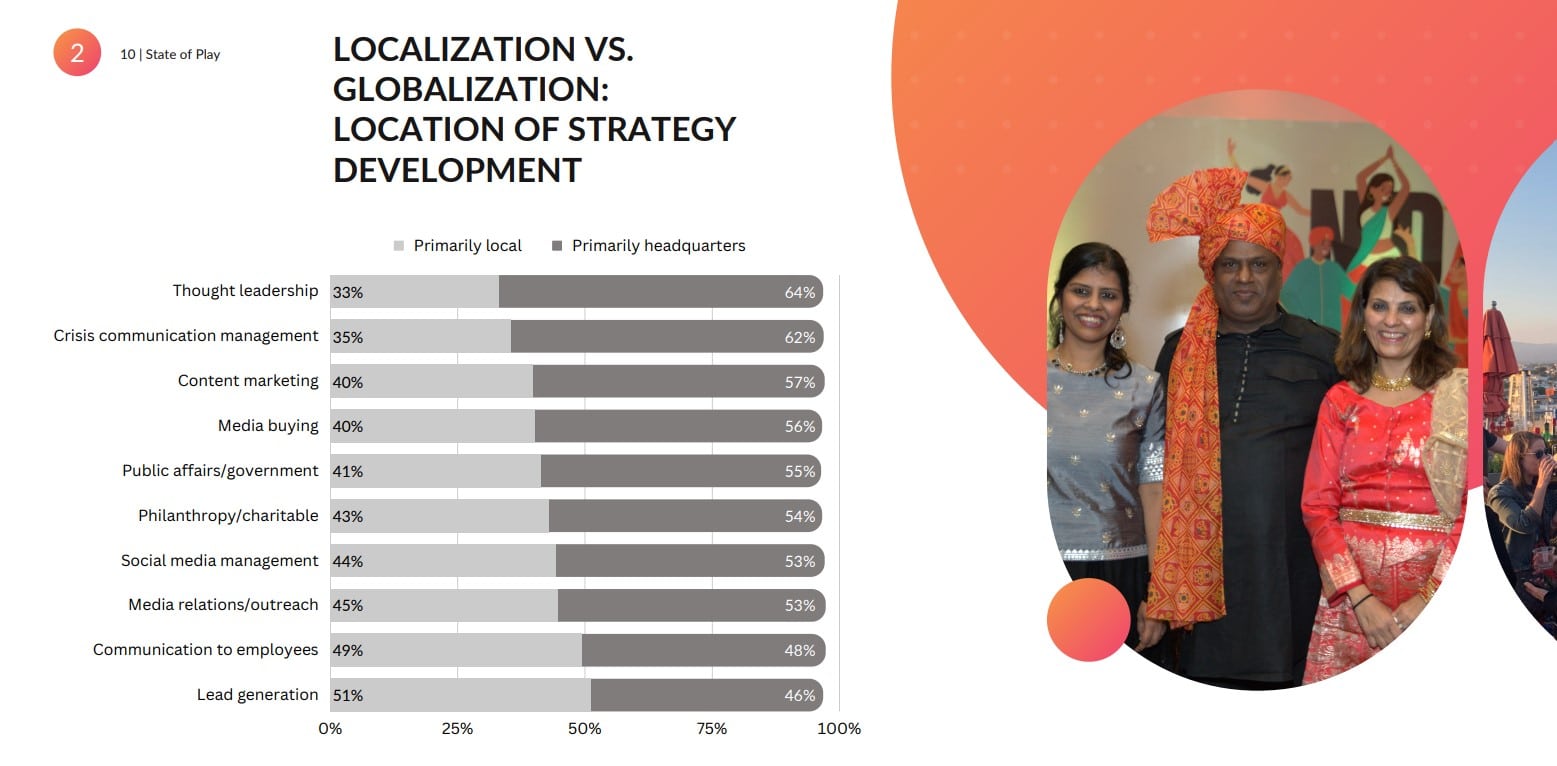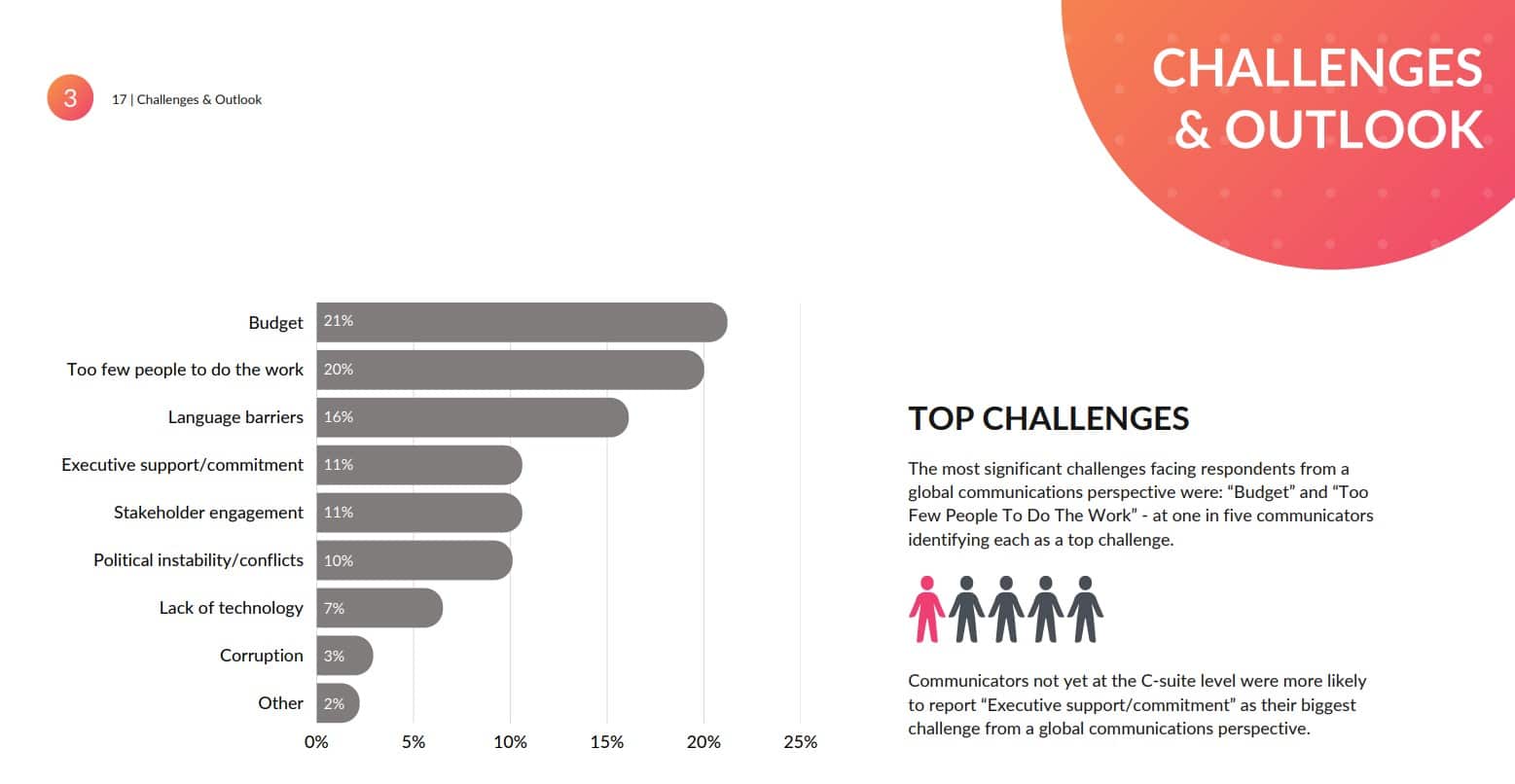Communicators around the world have more in common than their diverse geographies might indicate. New research from global communications network IPREX reveals that budget challenges, staffing shortages, and language barriers are top challenges across the board. But just as they all share core challenges, they also share a sense of optimism about the subject at the heart of our survey: communicating across borders.
The firm’s new report, The State of Global Communications and Marketing, is based on a survey of more than 400 companies and their communications functions across 28 countries. The data highlights organizations’ strategies for disseminating information both internally and externally, and uncovers similarities and differences among the world’s three regions: Europe, Middle East and Africa (EMEA), Asia Pacific (APAC), and the Americas.

Despite the host of challenges most of them are facing, half of respondents think it will be easier in the coming years. Technology was often written in as a key enabler. Findings also include the regions in which companies are most likely to outsource communications activities and the work global organizations are doing in diversity training, by region.

“This report helps readers get into the minds of top communicators at global companies, many of whom are clients of our IPREX partner agencies,” said Ann-Marie O’Sullivan, IPREX Global President and founder of AM O’Sullivan PR in Cork, Ireland, in a news release. “The level of candor they provide, including their professional outlook on the future of communications across borders offers unparalleled insight into the executive thought process. We foresee this report being a place corporate leaders can turn to again and again to understand the current state of communications around the globe.”

Download the full report here. You can also find several perspectives pieces on the survey data from partners in key geographies at the link.
All respondents are high-ranking communications professionals within their organizations, which range from less than 1,000 to more than 50,000 employees.








